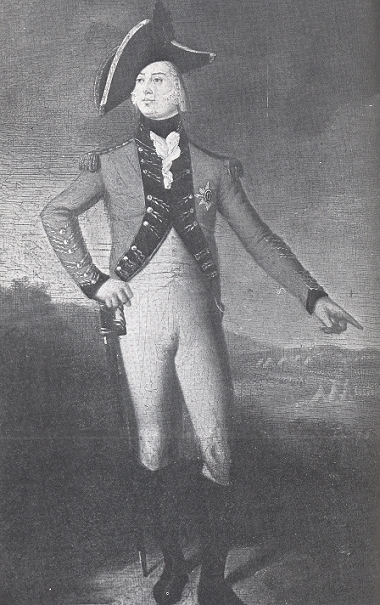

The Halifax Station, 1794-1800, Part 5 to the Life & Works of
Prince Edward, Duke of Kent

Julie had sailed for England after just missing her prince. She had not been long landed there when a message got through to her that Prince Edward was at Halifax and was staying there to take up his new command. On the 19th of August, having left England on July 14th, Julie came in from sea to Halifax on the Westmoreland packet and had with her "five servants."21
Halifax had not grown much since its founding in 1749. At the time of Prince Edward's arrival, in 1794, a census shows that the population at Halifax, I think exclusive of the military personal of both the army and the navy, stood at 4,897. It had not gone up much in forty years, when, in 1752, it stood at 4,249.22 Its fortifications were beefed up on account of the American Revolution; but -- "The peace of 1783-4 brought all activity to a standstill, where it remained about a decade. But the period of renewed warfare from 1793 to the great peace of 1815 saw the erection of many new fortifications at Halifax."23 The first few years of this build up was to be under the direct supervision of the Duke of Kent.
"Starting in 1795, spending on Halifax's defences soared; in that year alone Prince Edward drew on the treasury for 100,000 [pounds], and he continued to draw on the treasury for such amounts until Halifax's defences were transformed into an array of fortifications protecting the town and its seaward approaches. The collapsing fort on Citadel Hill was reconstructed, and Martello Towers (round stone towers of which one is preserved in Point Pleasant Park is a classic example) were built at strategic locations. George's Island was fortified and a new barracks built at the north and south sides of Citadel Hill."24
It was plain to the Duke that his presence at Halifax was needed and there was much work to be done. He wrote his friend de Salaberry25 from Halifax, early on: "I shall undoubtedly remain here, for unless a positive order from His Majesty shall oblige the Commander of the Forces to reside at Quebec, Halifax is without dispute the place where for every reason headquarters should be."26
Prince Edward's "reputation as a fusspot and a marinet"27 had proceeded him. "He had all that fussy attention to detail which invariably accompanies the officer who is trained for war but never tastes it, whose only experience of a battlefield is a rather tiring field day with his friends."28 The Duke had it ingrained in him, early, that it was necessary to see to the discipline of the soldiers under his command. Not long after first arriving at Halifax we see him taking the same sort of steps that he took at Quebec and at Gibraltar.
"The Prince at once stamped this state of things [drinking and gambling] with his most marked disapprobation, and quickly put an end to it among the military, by parading the troops every morning at 5 o'clock, always attending himself. ... The prince never touched a card, and as the early parade compelled its votaries to retire early to bed, gambling as well as drinking fell into disuse."29
Judge Brenton Halliburton of Halifax, in his reminiscences of the Duke of Kent many years later, wrote:
"His Royal Highness's discipline was strict almost to severity. I am sure he acted upon principle; but I think he was somewhat mistaken in supposing such undeviating exactitude essential to good order. Off the parade, he was the affable prince and polished gentleman. At his table every one felt at ease; but while it was evidently his object to make them so, his dignified manner precluded the possibility of any liberty being taken by the most forward."30
Or, GO TO
TABLE OF CONTENTS.
_______________________________[Up]
Peter Landry
2012 (2020)